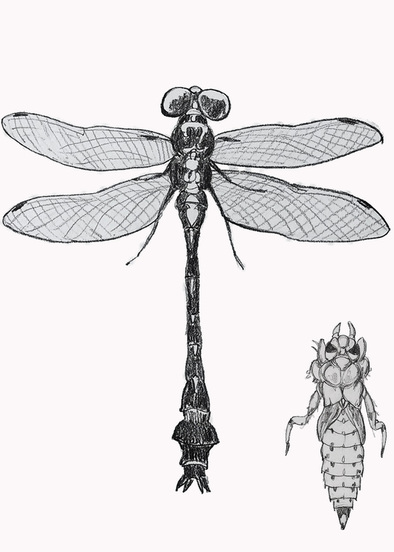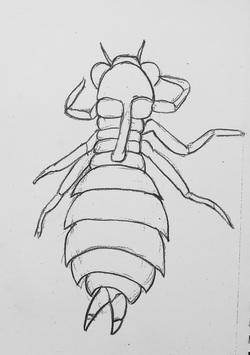
Fishermen might recognize the nymph form, but most people probably wouldn’t – because dragonfly nymphs live underwater, breathing through gills. The gills are located in the insect’s rectum (interesting). When I looked at a live nymph under a microscope, I saw its rear end pulsing little jets of water – in fact, the nymph propels itself through the water using this method.

A great resource for examining Odonata in detail is this website: http://www.mamomi.net/Home.html It’s run by Marion Dobbs, and has lots of his amazing photographs of these delicate insects. He gave me permission to draw from some of them. The adult dragonfly I drew is the Piedmont Clubtail (Gomphus parvidens), and the nymph form is the Common Sanddragon (Progomphus obscuris). These are the dragonflies in the first drawing shown above. Both species have been found in Richmond County.
Find out more about visiting the Phinizy Swamp through the website of the Southeastern Natural Sciences Academy: http://naturalsciencesacademy.org/
 RSS Feed
RSS Feed